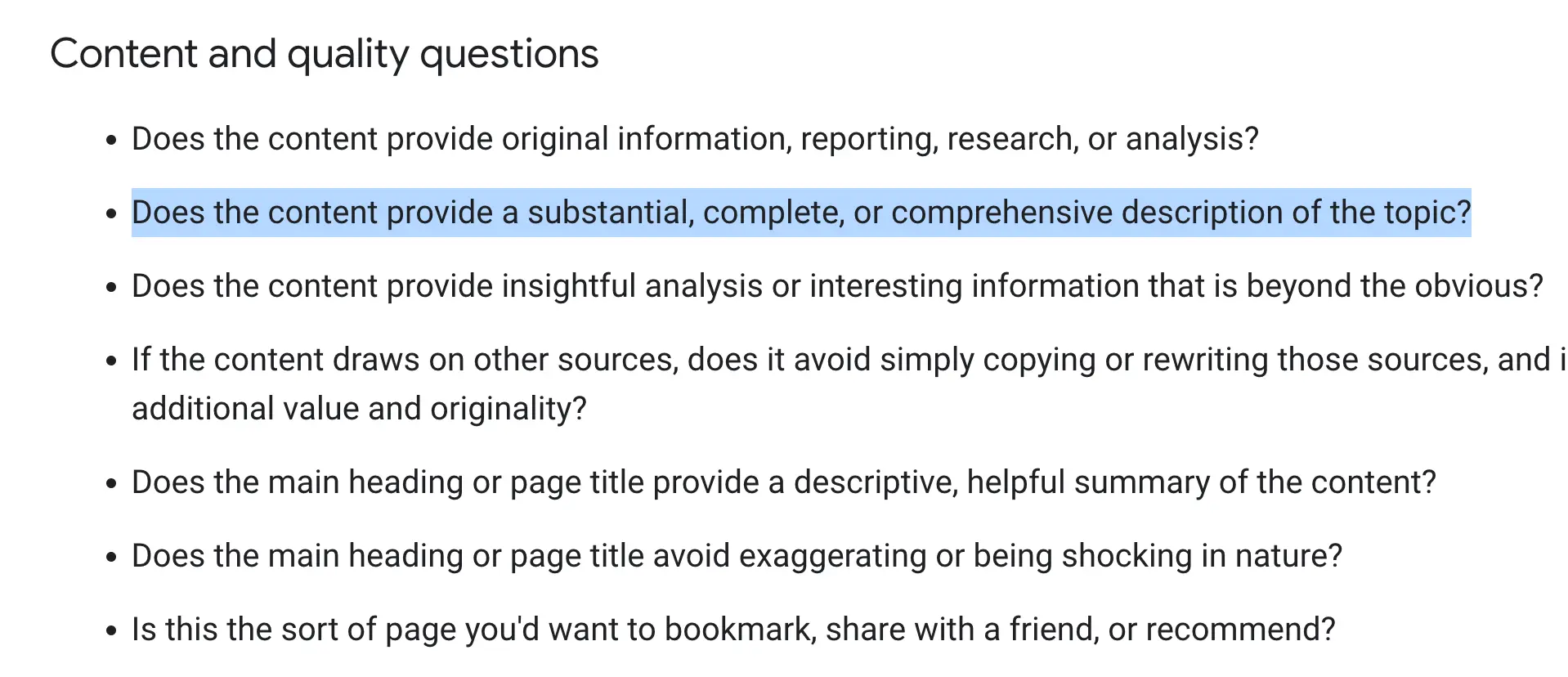Many SEOs have stressed the importance of keyword density as a critical ranking factor in the past. Is this true today? Where do you draw the line between adding keywords naturally to your content and keyword stuffing?
What Is Keyword Density?
Keyword density is an SEO term that refers to how many times a keyword is used in the content. It is calculated as a percentage by measuring the number of keywords divided by the total number of words on the page and multiplying that by 100.
For example, if you have a 1,000-word article and use a specific keyword 10 times, your keyword density is 1%.
Does Keyword Density Matter For SEO?
Keyword density does not matter for SEO. It's a thing of the past, not a ranking factor or something that will positively impact your SEO rankings. On the contrary, adding keywords unnaturally in your content to reach a number can be considered keyword stuffing (more on this below).
Google representatives have repeatedly mentioned that content creators should not focus on keyword density. In the latest update of their SEO guide, they explicitly state that repeating the same words (or variations) repeatedly is against Google's spam policies.

They also explain that "Google's language matching systems are sophisticated and can understand how your page relates to many queries, even if you don't explicitly use the exact terms in them".
Does this mean that you should not use keywords in your content?
Adding keywords to your website naturally helps search engines and users understand your content, and they are very important for SEO.
Keywords make your content relevant to what users are searching for and signal to search engines what your page is about, making it easier for them to index and rank your content accurately.
Best Practices For Using Keywords In Your Content
Let's look at the best practices for adding keywords naturally to the content.
1. Forget About Keyword Density Metrics And Write Naturally
The first tip is to forget about keyword density metrics and just write naturally for your audience. This may sound cliche, but it's the only way to write content to engage users.
When you start thinking about density percentages and keyword count, you'll create copy for search engines, not users.
Not only that, but you'll end up with content that is a rewrite of existing content, giving Google no incentives to rank your piece in the results.
So, be creative, consider what your audience might want to read about a topic, and create something unique that shows your experience on the topic and represents your brand.
2. Focus On Topics And Not Keywords
When writing for the web, the trend has changed from focusing on keywords to topics. As stated in Google's helpful content guidelines, content must provide a substantial, complete, and comprehensive topic description.

This means that if you focus on a particular keyword, you'll miss other important aspects of a topic.
If you concentrate on topic coverage, you'll naturally include related keywords in the content without worrying about keyword density or other technical content metrics.
3. Use Keywords Strategically
As mentioned above, keywords should be used in your content in a few places:
- URL
- Page Title
- Page Headings (H1, H2)
- Meta Description
- Anchor text for links
Other than that, when you write naturally for users, search engines are intelligent enough to understand the context of your content for ranking purposes.
4. Add Related Keywords That Make Sense For Your Topic
Another strategy for naturally adding keywords to your content is to identify topics that should be covered to make your article helpful for users. Depending on the state of your article, you can use two techniques.
For content that already has some ranking in Google, do this:
Use Google Search Console to find search queries that trigger your pages to show in the results but have a low CTR. Incorporate them into your content, ensuring they match the user intent and provide value. This will help these pages rank higher for those queries.
When writing new content, do this:
For new content, use an SEO tool to analyze the top-ranking URLs for your target keywords to see which keywords they are ranking for. Include these keywords naturally in your content to make it more relevant to what users and search engines like to see for those keywords.
For more details on implementing the above techniques, read How To Rank Higher on Google.
5. Check For Keyword Stuffing
Keyword stuffing is one element of SEO over-optimization. This happens when you force keywords into the content to satisfy keyword density or other metrics, usually provided by content writing tools.
Even if you don't intend to over-optimize a page, it may sometimes happen. Before hitting the publish button, ensure you read your content several times and remove any necessary keyword occurrences.
You can also ask ChatGPT to read your text, tell you if your content is overoptimized, and suggest how to improve it.
What Do Keyword Density Checkers Do?
When you search Google for keyword density, you'll find several tools in the top results. These tools analyze the content of a page (or pasted text), and they calculate how many times keywords are mentioned in the text.
They serve no purpose, and you should not waste time using them. They exist only to capture search traffic for people still searching for these terms.
Learn More About Keywords And SEO Copywriting
Our SEO Writing Guide will teach you how to write engaging content for SEO without violating Google rules. You'll learn how to structure your content, when to use keywords, and how to add elements of E-E-A-T to make your copy trustworthy.



